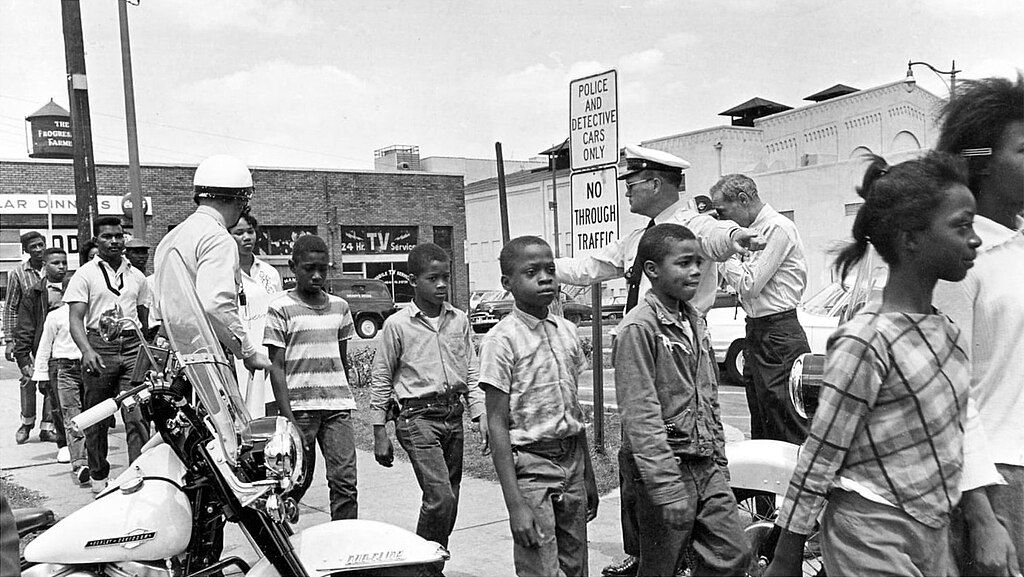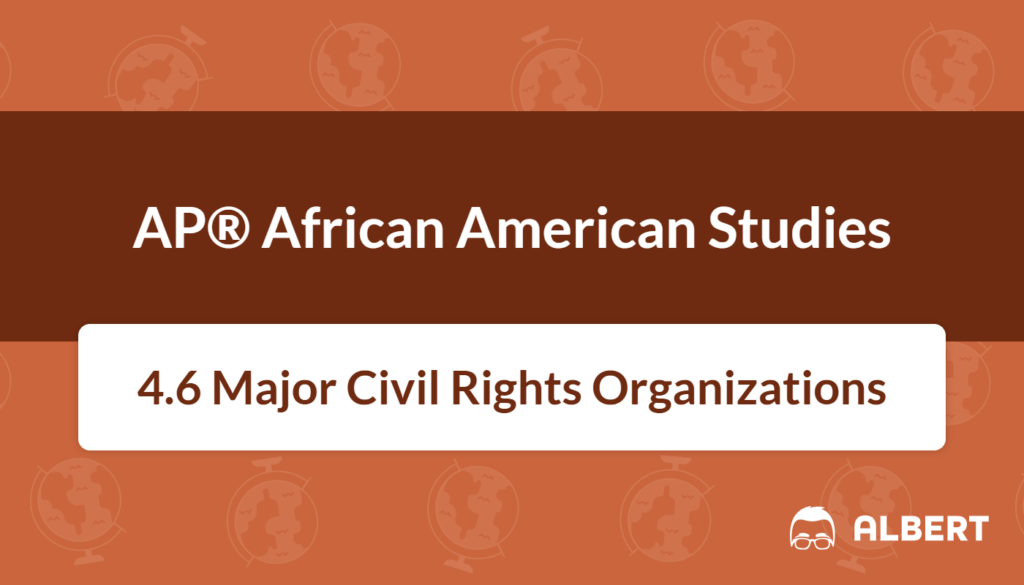What We Review
Understanding Major Civil Rights Organizations
Civil rights activism in the mid-twentieth century had a tremendous impact on America. It helped end legal segregation and pushed the nation to recognize the rights of African Americans. However, it was not just the work of a single leader or group. Instead, a wide range of organizations and individuals pushed together to end discrimination.
These groups are often called the “Big Four” civil rights organizations. Their efforts remind everyone how people from all backgrounds, experiences, and perspectives united with a shared desire to achieve equality. Understanding these organizations and their achievements offers a window into the broader Civil Rights Movement and its significance today.
The “Big Four” Civil Rights Organizations
National Association for the Advancement of Colored People (NAACP)
Many students wonder, “What is the NAACP?” Founded in 1909, the NAACP is the nation’s oldest civil rights organization. It formed in response to continuous violence against African Americans, particularly lynching. It has worked to end racial discrimination by focusing on legal strategies.
- History and Founding
- Created by figures such as W.E.B. Du Bois and other activists.
- Sought to challenge segregation and injustice in courts.
- Major Contributions and Methods
- Used lawsuits to fight unfair laws.
- Promoted policies that encouraged integration and equal rights.
- Example: NAACP’s Legal Victories
- The NAACP was central in Brown v. Board of Education (1954), which declared school segregation unconstitutional.
- Courtroom successes helped show how legal action could dismantle racist barriers.
Southern Christian Leadership Conference (SCLC)
The Southern Christian Leadership Conference, founded in 1957, united religious and community leaders. Led by Dr. Martin Luther King Jr. and others, SCLC civil rights organizations emphasized the power of nonviolent protest.
- Background and Leaders Involved
- Key officials included Dr. King and Ralph Abernathy.
- Organized churches and communities to peacefully demand equality.
- Focus on Nonviolent Protest
- Emphasized turning the other cheek, even when faced with violence.
- Strategies included marches, boycotts, and voter registration drives.
- Example: The Birmingham Children’s Crusade
- In 1963, SCLC worked with local groups to protest segregation in Birmingham, Alabama.
- Schoolchildren demonstrated, facing arrest and brutality.
- Media coverage of the violent police response shocked the nation, sparking a wave of support for the movement.
Congress of Racial Equality (CORE)
CORE began in 1942, initially inspired by nonviolent teachings and a spirit of interracial cooperation. Its members believed that direct action, civil disobedience, and peaceful protest could expose injustice and mobilize the public.
- Founding and Mission
- James Farmer and other key leaders created CORE to challenge segregation.
- Focused on training activists in nonviolent resistance.
- Notable Campaigns and Techniques
- Sit-ins at segregated restaurants.
- Organized Freedom Rides on buses to test new desegregation laws.
- Example: Freedom Rides
- In 1961, CORE activists traveled on interstate buses through the South, risking violence as they entered segregated terminals.
- These Freedom Rides brought national attention to ongoing segregation and forced federal authorities to enforce desegregation.
Student Nonviolent Coordinating Committee (SNCC)
SNCC civil rights efforts emerged from student-led sit-ins across the South. Formed in 1960, SNCC quickly became known for its strong youth presence and grassroots approach.
- Role of Youth in the Movement
- College students led protests and voter registration drives.
- Their energy and conviction inspired communities to take action.
- Emphasis on Grassroots Organizing
- SNCC volunteers lived among local residents, learning community struggles.
- Organized local campaigns for voting rights, housing equality, and cultural pride.
- Example: Mississippi Freedom Summer
- In 1964, SNCC joined others in registering African Americans to vote in Mississippi.
- Volunteers built Freedom Schools to empower local citizens with knowledge about civic activism and Black history.
Key Methods of Civil Rights Organizations
Nonviolent Protest
Nonviolent protest remains one of the most notable strategies of these organizations. Individuals refused to use physical force, even when police and mobs turned violent.
- Definition and Significance
- Avoiding harm to others, even under attack, displayed moral strength.
- Gained sympathy from supporters around the world.
- Various Forms of Nonviolent Protest
- Marches, such as the March on Washington in 1963.
- Sit-ins at lunch counters and other segregated spaces.
- Boycotts, like the Montgomery Bus Boycott in 1955–56.
Direct Action and Civil Disobedience
Direct action and civil disobedience were ways to show the injustice of segregation. They pressured leaders to pay attention to demands for equality.
- Description and Examples
- Blocking roads, staging “kneel-ins” at churches, or occupying segregated pools.
- Local branches used these tactics to grab the media’s attention.
- Impact on Public Perception
- Nonviolent actions often drew violent reactions from segregationists.
- News coverage of these confrontations shifted public opinion nationwide.
Grassroots Movements
Local involvement was crucial. People in towns and cities across the nation formed branches of national organizations, creating a powerful web of activism.
- Building Community Involvement
- Encouraged neighbors to attend public meetings and training sessions.
- Empowered everyday citizens to push for equal rights.
- Example: Local Branches Mobilizing
- NAACP branches organized legal cases in their own areas.
- SCLC affiliates developed local protests and voter registration rallies.
High-Profile Events Impacting the Civil Rights Movement
Birmingham Children’s Crusade (1963)
The Children’s Crusade was a strategic protest that involved children marching to protest segregation. Students believed that if adults could lose jobs or homes, children were freer to act.

- Purpose and Outcomes
- Protesters wanted to draw attention to harsh segregation in Birmingham.
- Police used fire hoses and dogs against the children.
- Media Coverage and Public Reaction
- Images displayed brutality on national television.
- Outrage accelerated support for civil rights legislation.
March on Washington (1963)
Organized by A. Philip Randolph, Bayard Rustin, and other leaders, the March on Washington created one of the largest peaceful rallies for jobs and freedom.
- Goals of the Event
- Framed issues such as poverty, racism, and equal opportunities for African Americans.
- Demonstrated unity among civil rights organizations.
- Martin Luther King Jr.’s “I Have a Dream” Speech
- Challenged the nation to rise above bigotry.
- Held up a vision of racial harmony that resonated worldwide.
Freedom Summer (1964)
Civil rights leaders recognized that voting rights were fundamental. Freedom Summer aimed to register as many Black voters as possible in Mississippi.
- Objectives and Achievements
- Led by SNCC, CORE, NAACP, and SCLC civil rights organizations working together.
- Established 41 Freedom Schools that celebrated Black culture and taught voter education.
- The Significance of the Mississippi Freedom Democratic Party
- Formed to challenge the segregationist policies of the state’s Democratic Party.
- Brought the fight for voting rights to the steps of the national political arena.
Legislative Achievements Resulting from Civil Rights Activism
Civil Rights Act of 1964
As public support for racial equality expanded, lawmakers responded with significant reforms. The Civil Rights Act of 1964 remains one of the most powerful legal achievements in U.S. history.
- Key Provisions and Impact on Society
- Ended segregation of schools, businesses, and public facilities.
- Prohibited racial and religious discrimination, allowing greater fairness in employment.
Voting Rights Act of 1965
This legislation further strengthened the progress made by earlier actions. It sought to end the unfair practices restricting Black citizens from voting.
- Explanation of Banned Practices and Protections Offered
- Outlawed poll taxes, literacy tests, and intimidation at polls.
- Sent federal oversight into states with records of discrimination.
Lasting Effects of Legislation
Though these laws changed the legal landscape, achieving racial equality remains an ongoing process. However, the foundation laid by the Civil Rights Movement still influences modern debates on equity and justice.
- Continuing Influence on Modern Civil Rights
- Inspired other movements for women’s rights, disability rights, and LGBTQ+ rights.
- Encouraged community leaders to promote better policies for diverse populations.
Key Primary Sources from the Movement
- “Nonviolence and Racial Justice” by Martin Luther King Jr. (1957)
- Praised the moral power of nonviolent protest.
- Connected to SCLC’s strategies of peaceful marches and boycotts.
- John Lewis and Colleagues, Prayer Demonstration at a Segregated Swimming Pool, Cairo, Illinois by Danny Lyon (1962)
- Photograph showing a group of activists, led by John Lewis, praying at a public facility that denied entry to African Americans.
- Demonstrates the importance of direct action, as their peaceful demonstration drew attention to unjust segregation.
- “The Revolution Is at Hand” by John Lewis (1963)
- Lewis spoke these words to emphasize the urgency of the movement.
- Linked closely to SNCC civil rights methods and the broader demand for immediate change.
Studying these sources shows how leaders and everyday people challenged racism. They used powerful words and images to influence public opinion and start conversations that led to real change.
Quick Reference Vocabulary Chart
| Term | Definition or Key Feature |
| Civil Disobedience | The act of peacefully refusing to follow certain laws or commands for moral or political reasons. |
| Nonviolent Protest | A method of protest that rejects all forms of physical violence, even under provocation. |
| Grassroots Movements | Activism led by local communities and volunteers rather than major leaders alone. |
| NAACP (National Association for the Advancement of Colored People) | Oldest civil rights group focusing on legal strategies to end discrimination. |
| SCLC (Southern Christian Leadership Conference) | Organization led by religious and community leaders promoting nonviolent social change. |
| CORE (Congress of Racial Equality) | Group that uses direct action and civil disobedience to challenge segregation. |
| SNCC (Student Nonviolent Coordinating Committee) | Youth-led civil rights organization emphasizing grassroots organization. |
| Freedom Rides | A series of integrated bus trips through the segregated South to test desegregation laws. |
| Birmingham Children’s Crusade | A protest that involved young students marching, highlighting police brutality against children. |
| Voting Rights Act of 1965 | Federal law that outlawed discriminatory voting practices, such as literacy tests. |
Conclusion
Civil rights organizations like the NAACP, SCLC, CORE, and SNCC played vital roles in ending legal segregation and establishing voting rights for African Americans. Through nonviolent protest, direct action, and grassroots movements, they gained support across the nation, influenced legislation, and reshaped American society. Each effort, from the Birmingham Children’s Crusade to Freedom Summer, demonstrated the power of individuals working together in creative, peaceful ways.
Today, these achievements remind everyone that defending rights is an ongoing responsibility. Exploring current civil rights organizations can help anyone stay involved and informed. Reading recent articles, studying primary sources, and supporting equality initiatives continue the legacy of the Big Four, safeguarding the principles fought for during the Civil Rights Movement.
Sharpen Your Skills for AP® African American Studies
Are you preparing for the AP® African American Studies test? We’ve got you covered! Try our review articles designed to help you confidently tackle real-world AP® African American Studies problems. You’ll find everything you need to succeed, from quick tips to detailed strategies. Start exploring now!
Need help preparing for your AP® African American Studies exam?
Albert has hundreds of AP® African American Studies practice questions, free response, and full-length practice tests to try out.









